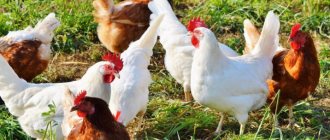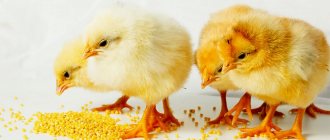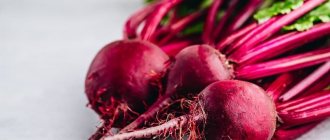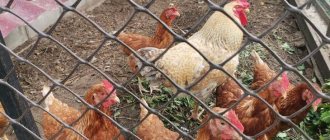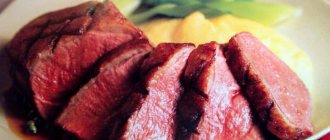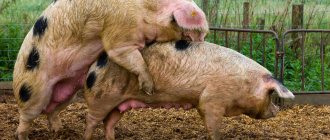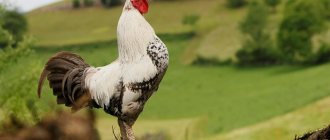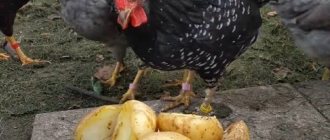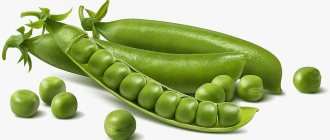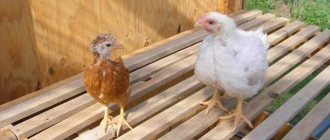To raise a viable population of chickens at home, it is very important to know what to feed chickens from the first days of life. Regardless of whether the chicks were hatched by a hen or they were born in an incubator, babies first of all require careful care and a balanced diet. The rapid growth and good development of poultry is ensured by a complete, environmentally friendly diet, including proteins, fats, carbohydrates, vitamins (A, C, E, D, group B) and minerals (calcium, phosphorus).
The chicks’ body is very susceptible to the slightest disturbances in diet, food composition and quality
How to feed newborn chicks
The first feeding of the chicks must be done immediately after they hatch and dry out. The chick, still uncertainly standing on its tiny legs, begins to reflexively peck at all the crumbs that are in its field of vision and resemble food. As soon as the first food enters his esophagus, the digestion mechanism starts. You need to make sure that this happens no later than 1-2 hours after hatching from the egg. Within 10-12 hours of hatching, easily digestible food is the preserved remains of the yolk in the yolk sac, which, in addition to the pecked food, help compensate for the energy expended in breaking through the eggshell.
The best food for the first time will be fine corn grits or special feed for chickens. It is better to scatter them on paper or cardboard spread on the floor to make it easier for the chicks to peck.
You also need to take care of drinking: on the first day, it is recommended to add a solution of glucose (3-5%) and 1 g of ascorbic acid (vitamin C) to the water per 10 liters of drinking water
Cottage cheese
Cottage cheese, like yeast, is undoubtedly very useful for your chickens. It can be given literally from 1-2 days of life. The fact is that all fermented milk products are necessary for chickens; they help them develop properly and grow quickly. The calcium and vitamin D contained in cottage cheese help strengthen the bones, and lactic acid bacteria, colonizing the gastrointestinal tract, normalize the acid-base balance. As a result, the risk of diseases of the gastrointestinal tract is reduced, and all food will be absorbed better.
In addition to cottage cheese, chickens’ diet includes yogurt, whey and milk. They are no less useful than cottage cheese. It is good to make mash based on yogurt or whey; it is also recommended to pour yogurt into drinking bowls so that the birds can drink it instead of water. The main thing is that the yogurt is low-fat and not spoiled.
Meals on the first day
The traditional food for day-old chicks is a hard-boiled chicken egg. But recent scientific research in the field of poultry farming proves that this is completely wrong.
Firstly, the chick’s stomach, with such a food consistency, does not receive the proper load, which leads to dysfunction of the muscles of the digestive organs. Secondly, the body is oversaturated with easily digestible proteins and fats, which negatively affects the absorption of B vitamins, which ensure the formation of the nervous system.
On the first day, experts advise adding semolina or corn grits to a finely chopped boiled egg.
Despite many years of experience in successfully feeding day-old chicks at home with boiled chicken eggs, the opinion of experts should not be ignored. Perhaps following their recommendations will help produce more viable and healthy livestock.
Celandine
Celandine is classified as a poisonous plant and is not used as chicken feed. Celandine is a medicinal plant and has a number of beneficial properties, but it is too aggressive for small birds. Along with celandine, vekh, meadow buttercup and any spoiled and rotten grass are contraindicated. Be careful when picking green grass for the chicks - beware of celandine! Also make sure that celandine does not grow in the pen where you let the chickens out for a walk. Protect their digestive system from the effects of the caustic juice of celandine.
Nutrition in the first 10 days
From the first to the tenth day of life, chicks need to receive food every two hours, including at night. The best food for them during this period is a mixture of hard-boiled and crushed eggs or crumbly cottage cheese with cereals.
From the second day, in addition to semolina and corn grits, you can add finely crushed barley and wheat, ground oat flakes, millet or a special combined feed for chickens to cottage cheese or eggs.
According to the norm per serving, calculated for one feeding of 10 birds, 50 g of cereal is mixed with 1 egg or 50 g of crumbly cottage cheese. It is also useful to add milk powder (about 12 g or 1/4 of the weight of the cereal) and multivitamins (grind 1 tablet) to the mixture.
At first, it is necessary to monitor whether all the chicks are pecking at the food, and to feel each crop to see how full it is after feeding. Chickens with an empty crop are placed in separate cages and fed individually until their appetite is restored.
Monitoring the condition of the goiter will help identify unhealthy individuals and provide them with timely assistance.
Finely chopped greens are added to the mash for livestock over three days old: young or dried nettles, alfalfa, clover, dandelions, plantain, green onions.
For week-old chicks, crumbly mash is prepared based on fermented milk products, broth from fish or meat waste, which is added at the rate of 5 to 7 g per chicken. Such mixtures cannot be kept in the feeder for longer than 30-40 minutes; uneaten remains should be thrown away immediately. Sour food can cause poisoning and even death for pets.
In addition to cottage cheese, babies are fed with other lactic acid products and milk processing waste, using yogurt, kefir, buttermilk and whey. They are an excellent source of calcium and proteins, which are so necessary for the formation of the musculoskeletal system and growth, and also support the microflora of the digestive tract. As a rule, milk is given in the morning, after which the drinking bowls are filled with fresh water. Chickens that do not like curdled milk and refuse it must be picked up and force-fed from a pipette.
Fresh milk can lead to indigestion and cause plumage to stick together, so it is excluded from the bird menu.
A tray with coarse sand or fine gravel is placed in the poultry house, in which small fluffy lumps happily bathe and peck at the grains of sand they need for digestion.
From the 6th to the 10th day of life, mineral supplements in the form of crushed shell rock, well-boiled and ground eggshells, and chalk are introduced into the daily diet.
To disinfect water, it is recommended to pour a weak solution of potassium permanganate into drinking bowls twice a week for half an hour. Potassium permanganate should not be given unnecessarily in the first days of life of chickens.
Sand
Sand and food with sand should not be consumed by chicks. It clogs the baby's goiter and can cause obstruction. But fine-grained gravel with a fraction of 2–5 mm, on the contrary, promotes better digestion.
- Chickens can be fed bread, but it must be served correctly. You cannot steam it, as this will make it sticky and can clog the beak or cause diarrhea. Chickens can only eat white bread - black has too much acidity. Even for adult chickens it is not recommended more than once a month. It is best to use stale (but not spoiled) bread or crackers, after soaking them in water, milk or yogurt. Before putting it in the feeder, it should be squeezed out. Bread can also be added to wet mash.
- It is best to give bread to chicks that are already 7 days old.
- The bread is soaked in water in a ratio of 1:2.
- It is a good source of carbohydrates and proteins. It contains a variety of minerals (silicon, calcium, potassium, phosphorus, magnesium, manganese, selenium, copper and others). In addition, almost the entire group of B vitamins is present, as well as vitamins PP, E, H.
- Chickens can be given green onions. You can also use regular onions, but both options must be chopped and mixed with other food before use, since the pungent taste of this vegetable may not be to the liking of the chicks.
- Chicks can eat onions from the 5th day of life.
- The consumption rate of onions (green or onions) is 5–6 grams per day.
- It contains many vitamins (C, K, A, group B and others) and minerals. This product is good for the health of young animals: it increases immunity, is a preventive measure for gastrointestinal disorders and has antiparasitic properties.
Nutrition for chickens older than 10 days
For broods older than 10 days, it is no longer necessary to give food at night; breaks between feedings during the day are gradually increased to 3-4 hours.
Chopped vegetables are included in the menu: potatoes (boiled), fodder beets (fresh, boiled or steamed), grated carrots (preferably red), pumpkin, zucchini, rutabaga. Some poultry farmers also provide stale bread soaked in kefir, after squeezing and crumbling it.
Starting from 3 weeks of age, grown-up chicks spend most of their time in a pen or in open grazing. They stop chopping the grass for them and hang it in bunches on the walls of the poultry house. The amount of feed is gradually increased, while simultaneously increasing the content of vitamins and minerals. Sea fish waste, fish or meat and bone meal, and fish oil are added to the mash.
One-month-old chicks are transferred from crushed cereals to crushed grain, and from one and a half months they are already given whole grain or feed specially balanced for age needs
In order for chicks to grow healthy, they need to be given natural and fresh food. It is important to observe intervals between feedings in accordance with age, and babies should be constantly full.
How to replace grass in winter?
When breeding chickens in winter and early spring, you should especially carefully monitor the nutrition of the young. Lack of sun affects the health of children. To avoid growth retardation, chickens are given synthetic vitamins and do not forget about natural vitamin feed.
For the winter, young nettles, yarrow greens, and clover are prepared for the birds. In winter, the dried herbs are ground into powder and added to the chicken mash.
As fresh greens for poultry, oats, wheat, barley, and watercress are sprouted in bowls. Greens are cut into pieces and fed to babies up to 5 g per day.
Fresh vegetables are an irreplaceable source of vitamins for poultry in winter and early spring.
Features of feeding chickens of various breeds
There are certain differences in feeding poultry intended for different economic purposes:
Egg type productivity
Organizing proper nutrition for chicks, from which it is planned to raise worthy laying hens, is a very important component of the future egg production of birds. From the moment of hatching, their diet should support the development of hens and preparation for egg laying. In most breeds, there is a heritable inverse relationship between adult weight and fertility. Therefore, young laying hens need to be fed in such a way as to ensure a balanced supply of proteins, fats, carbohydrates and beneficial nutrients, but at the same time avoid gaining excess weight.
Future laying hens need to be provided with a nutritious, but not too high-calorie diet.
We give the approximate composition of dry mash for week-old chickens in the table:
| Product | Content in total mass, % |
| Millet or corn grits | 45 |
| Ground bran | 20 |
| Boiled carrots, finely grated | 15 |
| Sunflower meal | 10 |
| Meat and bone meal | 5 |
| Herbal meal | 3 |
| Feed crushed chalk | 2 |
From the 11th day of life, feed yeast (2-3% of the dry base weight) is introduced into the menu of future laying hens, and grass meal is replaced with fresh herbs.
On the 12-15th day, they gradually begin to add crushed grain to the ground grain, bringing their ratio to equal proportions by the 30th day. The young animals are then switched to whole grain wheat or barley.
Chickens at the age of 8.5 weeks have their food reduced to prevent premature puberty and early egg production - females that start laying eggs early lay smaller eggs throughout the entire productive period. First of all, they reduce calorie content by reducing the proportion of crushed grain in the feed. To enhance the feeling of fullness, increase the fiber content (vegetables, herbal flour, sunflower cake, chopped herbs).
Meat and egg direction
As a rule, the breeding of universal (meat-egg) breeds is carried out by amateur poultry farmers who want to provide the everyday table with both fresh eggs and meat products.
The diet of universal type chickens should contain more protein and easily digestible carbohydrates
We summarize the approximate composition of the dry mash base in the table:
| Product | Content in total mass, % |
| Corn grits | 50 |
| Boiled chopped potatoes | 15 |
| Meat and bone meal | 15 |
| Sunflower meal | 10 |
| Chopped greens | 5 |
| Feed fat | 2 |
| Feed yeast | 2 |
| Feed crushed chalk | 1 |
From the 6th day, during evening feeding, low-fat cottage cheese and yogurt warmed to room temperature are added to the mash every other day.
Chicks of meat-laying breeds require a more varied diet than egg-laying breeds. Therefore, upon reaching 7 days of age, once every 2 days they need to be given a weak, warm decoction of yarrow, which maintains normal digestive function and prevents the appearance of internal parasites and the development of intestinal disorders.
It is recommended that one-month-old chicks be given earthworms or mosquito larvae (bloodworms) as another source of proteins and microelements. If this is not possible, the food is enriched with special protein additives.
By the age of 2 months, young animals also reduce their caloric intake, but compensate for this by increasing the protein content necessary for the formation of muscle mass. The normal development of skeletal muscles during the growth period ensures an increase in muscle mass in adults.
Meat type (broilers)
Broilers are record holders for speed of growth and weight gain. By two months, the bird’s weight reaches 2 to 3 kg. Usually at this age young animals are slaughtered, since their further fattening is considered impractical.
Maximum weight gain in such a short time is achieved through balanced and high-quality feed
Even at home, industrial feed is most often purchased for raising broilers. It contains an optimal ratio of proteins, fats and carbohydrates, and also contains all the necessary microelements and vitamins in the required proportions.
In addition, you can prepare an excellent nutritional mixture yourself, which will cost much less.
Approximate composition of dry mash base for broiler chickens from hatching to 2 weeks of age :
| Product | Content in total mass, % |
| Corn grits | 50 |
| Finely ground wheat | 16 |
| Sunflower meal | 14 |
| Whey or low-fat kefir | 12 |
| Barley | 8 |
Composition of the mixture for feeding broilers older than 2 weeks and until slaughter :
| Product | Content in total mass, % |
| Corn grits | 48 |
| Sunflower meal | 19 |
| Wheat bran | 13 |
| Meat and bone meal or fish meal | 7 |
| Feed yeast | 5 |
| Dry return | 3 |
| Fresh herbs | 3 |
| Feed fat | 1 |
Sorrel
Another useful herb for your chickens is sorrel. Sorrel is a real storehouse of vitamins, contains B vitamins, vitamin PP, C, E, A, K, and is rich in proteins, carbohydrates and fiber. It is very convenient that sorrel is an early plant and in the spring you can pamper the chicks with its greens. As already noted, greens begin to be fed to chickens at 2-3 days of age. Sorrel is given, like any other herb, in finely chopped form on its own or mixed with ingredients such as egg, millet, cottage cheese.
Harmful plants
Not all grass is good for chickens. There are also harmful and even poisonous ones. You need to know them well so as not to inadvertently feed it to the chickens.
These are the herbs:
- broom;
- cockle;
- black nightshade;
- henbane;
- hemlock;
- horse chestnut;
- spotted hemlock;
- belladonna;
- left-handed jaundice;
- hellebore;
- elder;
- potato inflorescences;
- juniper;
- yarrow;
- Buttercup is pungent.
Therefore, you should be very careful when collecting greens for the chicks. And also, before releasing them into the pen for grazing, it is worth checking whether there is grass growing there, which is undesirable for chickens to eat. They are not yet capable, like adult chickens, of distinguishing what can be pecked and what cannot.
